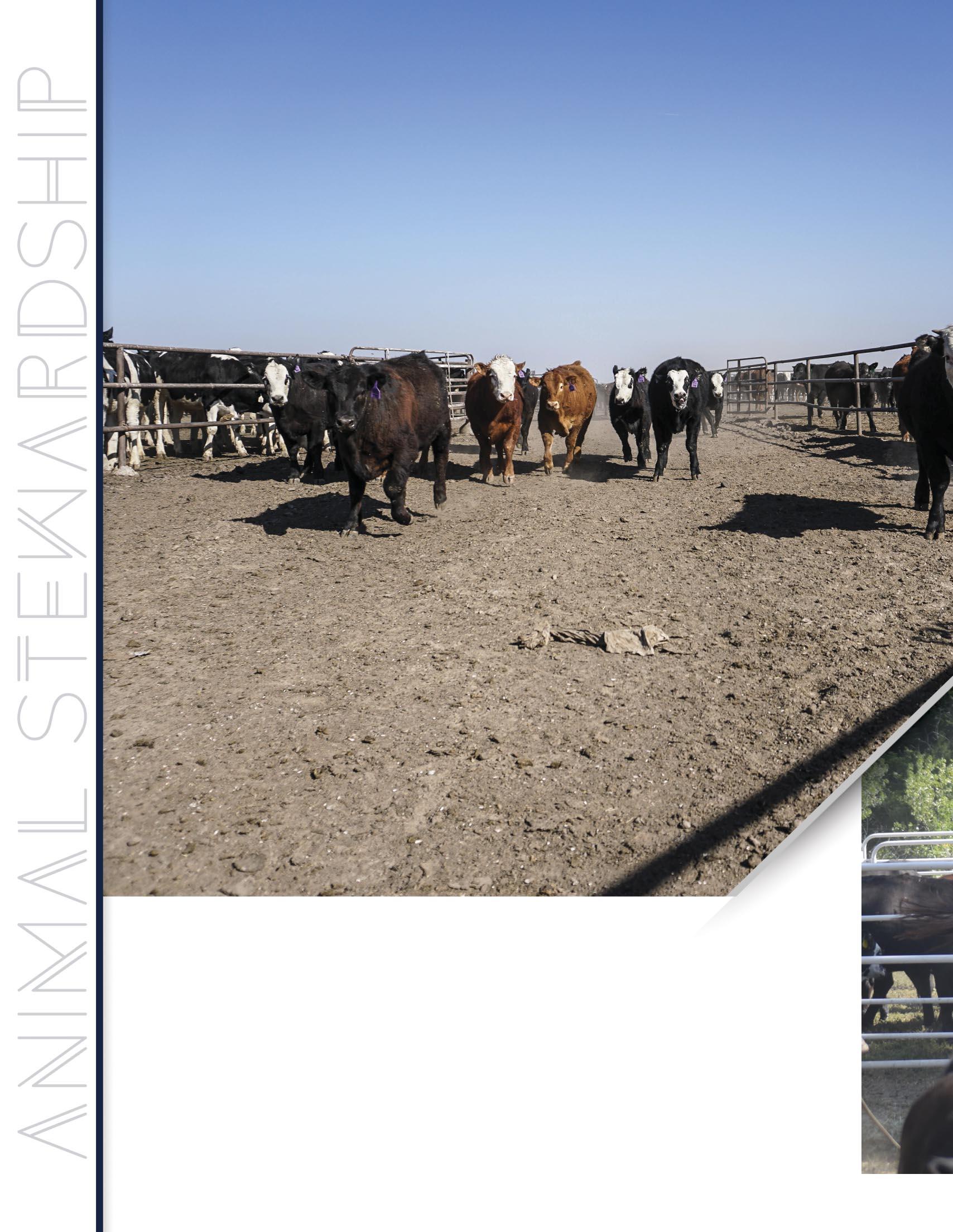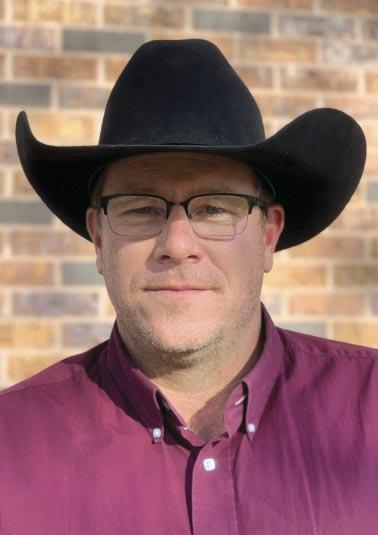
3 minute read
AS YOU HANDLE CATTLE, IT’S ALL ABOUT THE APPROACH
By Chad Engle, U.S. Meat Animal Research Center
There are moments in life that may not seem too big of a deal at the time, but years later a person realizes that they were actually very pivotal moments that changed the trajectory of lives and careers. I remember one such moment for me, sitting in a conference room in a hotel in Grand Island, Nebraska, at a feedyard management meeting back in 2010. At the time, I worked at the USDA-ARS’ U.S. Meat Animal Research Center (USMARC), and I had been asked by the Director to be sure to keep up with the industry connections that I had, as well as to cultivate new ones.

I had been with USMARC for a little over two years, and this meeting was one of many that I attended to make connections and hopefully learn a thing or two. Towards the end of the day, a charismatic speaker grabbed my attention. The speaker was veterinarian Dr. Kip Lukasiewicz, and the message was a fresh new take on cattle handling, stockmanship, and animal welfare. I left that day knowing that I wanted to get to know Dr. Kip, recruit him to our team, and see if we could implement some of the new ideas he presented on cattle handling. Eleven years later, I could not be happier that he joined our team. What I truly did not grasp that day was that not only could we improve our cattle handling, but that in doing so, we would be embarking on a journey that would never end, a journey that would change the way we viewed our jobs and how we looked at cattle. Our approach has become one of constant improvement, always wanting better, always wanting more.


Change is hard. Almost anyone that has made a big change will admit that. I would argue it is even harder when what is currently being done is working pretty well. In our industry, no one survives very long if they are not pretty good at what they do, as well as committed to doing it to such a level that is best described as stubborn. When a group of people is good at what they do and have done it successfully for a long time, they will have some natural reluctance and skepticism towards anyone who walks in and tells them that we are going to change the way we do things and that those changes will make it better. This was the exact situation at USMARC. I knew we were good, actually really good, at handling large herds of animals efficiently and successfully. I had a crew of people that were proud of their skills and of their livestock, and a lot of them were pretty darn convinced that the way we did things was so good that it could not be improved upon. Today, I am sure that my crew would agree that there is always room for improvement.
Fast forward eleven years. Are we perfect? Absolutely not, and we never will be. We are, however, better every day. As we began to achieve new levels of success, we started to realize what was possible. This realization completely changed our approach. We no longer believe we cannot get better. We no longer assume what we are doing is the best. We have proven to ourselves that there is better out there, and we should always be striving for it. Only time will tell how good we can get. What I can tell you for sure is that we will be striving for it.
I am not going to discuss the specific details of how we have improved handling and decreased morbidity and mortality, improved conception rates, cut down on injury accidents to both people and cattle, improved facilities, and increased revenues. I will let Dr. Kip and his team at PAC explain all that. Suffice to say that we have made great strides in all these areas, and we will continue to improve down the road.
As your operation moves towards the future, you should expect more scrutiny and requests for transparency from diverse stakeholders regarding your cattle handling and husbandry practices. Proactively inviting these interactions and allowing stakeholders to ask questions about your current practices provides them with a positive experience and an opportunity to understand and learn. Respecting their views and opinions and providing understanding on both sides of the animal handling and husbandry discussion connects you with your community and will help move your business and the industry towards long-term success. There is always room to grow for your operation and for ours at USMARC. Decide now to embrace these opportunities and you will already have won the first battle.

Chad Engle grew up in a diversified cattle and farming operation in Nebraska. He has spent the last 20 years in the cattle industry, working in a variety of capacities from sale barns and ranches to a 120,000 head Kansas feedyard before joining U.S. Meat Animal Research Center (USMARC) in 2008. He is currently the Livestock Manager at USMARC, where they have cow-calf, feedlot, sheep, swine, and horses. Chad also runs cows and operates a feedyard at home with his wife and two children.











